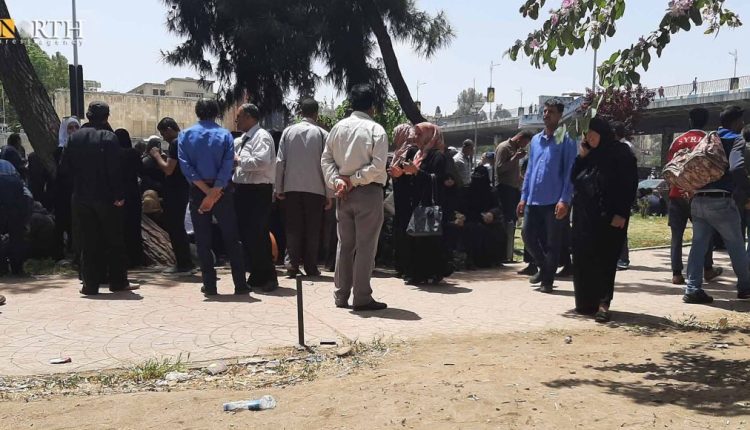
By Nalin Ali
QAMISHLI, Syria (North Press) – In one of the camps of the Internally Displaced People (IDP) in northern Syria, Amina, a pseudonym, recounts the story of her husband who has been missing since 2014 when the Islamic State group (ISIS) took control over Sere Kaniye (Ras al-Ain) in northeastern Syria.
“News echoed that a car bomb entered the village,” Amina, who hails from the town of Mabrouka in the west of the city of Sere Kaniye said. “We rushed out except for my husband and his cousin. They rode their motorcycle and headed towards Sere Kaniye.”
“We heard shooting. And the town was surrounded due to the car bomb,” she told North Press. “My husband’s cousin was injured, and since then, we have not known anything about my husband.”
Amina’s attempts to search for her husband in ISIS detention centers have been unsuccessful. He is now listed as a missing person.
Estimates cited by the U.N. in 2021 indicate that more than 130,000 persons are missing as a result of the current conflict in Syria. But there were also missing persons before 2011, and it is believed that the actual numbers are higher than that reported.
Missing persons in NE Syria
In Northeast Syria, the Committee for Missing Persons faces significant challenges, including the lack of DNA analysis laboratories and specialized staff.
On Aug. 29, 2023, the Autonomous Administration of North and East Syria (AANES) announced the formation of the “Committee for Missing Persons in North and East Syria” in response to a call from the United Nations General Assembly, which adopted a resolution on the matter in June 2023.
Khaled Omar, spokesperson for the Committee said the Committee members work to overcome the challenges they face through partnerships with specialized international institutions in this field.
“We hope that we will soon be able to provide DNA analysis laboratories in the areas of northeast Syria,” Omar said.
For six months, the Committee has been collecting information on missing persons and training specialized staff to conduct DNA analysis.
According to available information, the Committee members prepare to meet with leaders of ISIS who are currently held in detention centers that are controlled by the Syrian Democratic Forces (SDF) to uncover the fate of the missing.
Complicated issue
Helez Abdulaziz, Executive Director of Insight, an organization working on documenting human rights violations, said the extensive areas formerly controlled by ISIS is one of the challenges that face the relevant institutions to uncover the fate of missing persons.
Abdulaziz pointed out that the group used to move the detainees between different prisons in Syria and Iraq, making it difficult to search for the missing.
“Moreover, the ISIS intentionally buried detainees and persons they killed in mass graves,” she told North Press. “They also mutilated their bodies, the matter that is significantly complicating the process of identifying the victims.”
Izzeddin Saleh, Executive Director of Synergy/Hevdesti Association, a victims’ advocacy group operating in Northeast Syria, emphasized that addressing the issues of missing and abducted persons requires efforts and time due to the ongoing 13-year-old conflict in Syria.
“All conflict parties have engaged in arbitrary detention and enforced disappearance do not cooperate with institutions, boards, and NGOs attempting to address this issue,” Saleh added.
The establishment of an independent institution for uncovering the fate of missing persons, along with the crucial role of civil society organizations, and families of missing, provides hope for getting information about the fate of the missing in the upcoming periods.
